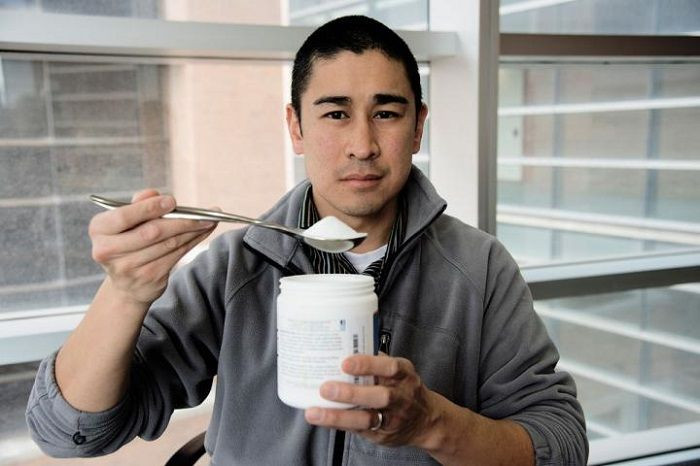Natural Sugar Trehalose Could Treat Fatty Liver Disease, A Condition Associated With A High-Sugar Diet

The best way to combat nonalcoholic fatty liver disease (NAFLD), a liver disease associated with diets high in fats and sugar, may be to consume more sugar, according to a recent study published in Science Signaling.
Nonalcoholic fatty liver disease (NAFLD) is one of the most common liver disorders in the United States, with recent reports estimating that at least 30 percent of people in the U.S. are living with the condition. Despite its prevalence, there is no drug treatment for the disease — characterized by excessive fat accumulation in the liver.
It may seem counterintuitive to treat a liver disorder partially caused by sugar consumption with more sugar, but new research out of Washington University School of Medicine shows that consuming trehalose, a natural sugar found in plants and insects, prevents the sugar fructose — thought to be a major contributor to the disorder — from entering the liver.
"In general, if you feed a mouse a high-sugar diet, it gets a fatty liver,” lead author Dr. Brian J. DeBosch, a pediatric gastroenterologist, said in a statement. "We found that if you feed a mouse a diet high in fructose plus provide drinking water that contains 3 percent trehalose, you completely block the development of a fatty liver. Those mice also had lower body weights at the end of the study and lower levels of circulating cholesterol, fatty acids and triglycerides."
In their mice study, DeBosch and his colleagues showed that the all-natural sugar triggers liver cells to clean up their excess fat by blocking “the transport of energy on the form of sugar” which causes the cells to behave as if they are starving. This causes the cells to activate a process called autophagy, or self-eating, in which they consume the fat already stored in the cell.
"We appear to be hijacking the liver's own starvation pathway using a sugar already found in nature," explained DeBosch. "We think autophagy may be triggered when the cell is stressed with too much fat or protein buildup. The cell turns on autophagy in response to the stress or because of a lack of energy and starts gobbling stuff up. It's a house cleaning."
The study suggests that NAFLD develops when the liver processes an overwhelming amount of dietary sugar, especially fructose — found naturally in fruit but also added as high-fructose corn syrup to soft drinks and many processed foods. The body ultimately stores this fructose as fats called triglycerides. Consuming trehalose helps clean up this excess fat, which can build up to toxic levels that may eventually require a liver transplant.
The findings are promising, but more research is needed before trehalose could be tested in people with NAFLD, researchers say.
"I can't recommend it to my patients yet," said DeBosch, who practices medicine at St. Louis Children's Hospital. "We know the mice that received drinking water with three percent trehalose lost weight, and we suspect that weight loss was due to loss of fat, but we can't be certain that's the only effect. We need more studies to make sure they were not losing bone or muscle mass."
In the meantime, people with NAFLD or who may be at risk of developing the liver disorder are advised to avoid foods with added fructose, especially sugar-sweetened beverages. NAFLD has also been linked to constant sitting and obesity.
Source: DeBosch B, Heitmeier M, Mayer A, et al. Trehalose Inhibits Solute Carrier 2A (SLC2A) Proteins to Induce Autophagy and Prevent Hepatic Steatosis. Science Signaling. 2016.
Published by Medicaldaily.com



























